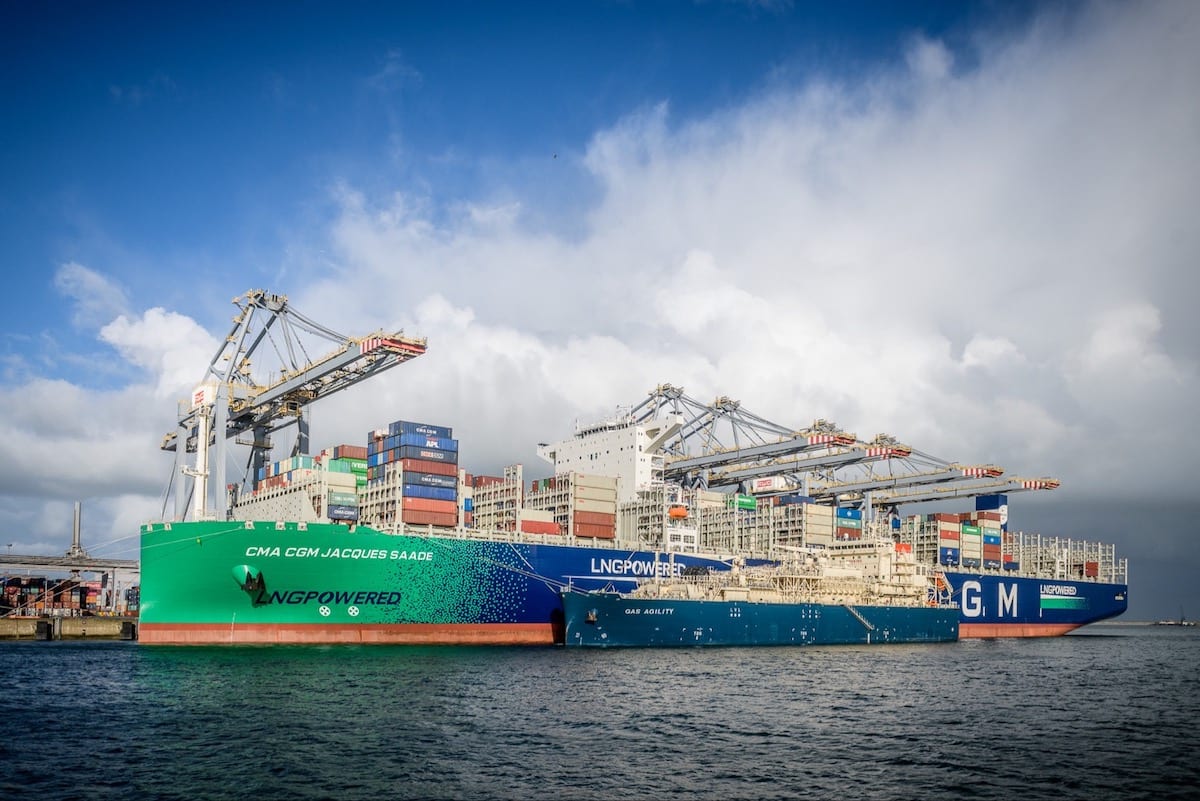The drive for decarbonisation we witnessed in 2022 has continued into 2023, demonstrating the shipping’s industry positive strides in the fast-paced transition towards a more sustainable future.
In the absence of a ‘silver bullet’ for shipping’s commercial fleet, choosing the right evolutionary pathway for vessels will require a sophisticated and tailored approach that brings together the expertise of knowledgeable partners.
The industry is making positive strides towards the scaling up of low and zero-carbon fuels, but the existing bunkering infrastructure needs some work to ensure availability and supply at the right price. It is therefore likely that ship owners will use LNG or drop-in fuels in the foreseeable future as a transitionary step towards full decarbonisation.
Transitionary options
LNG is a valuable fuel in today’s mix with its ability to immediately reduce emissions – compared to fuel oil – and comply with current regulation – for example the IMO’s Global Sulphur Cap – as well as its global availability and scalability. It opens the door to carbon-neutral options – such as bio-LNG, synthetic LNG and ammonia – which will be crucial in the near future and more trials in this area are to be expected.
However, the impact of Russia’s invasion on Ukraine saw substantial price rises, and weak demand from China – due to their stringent lockdown restriction – which stemmed the growth rate of the fuel. Despite this, research from DNV shows that “against all odds, 2022 turned out to be almost on par with the record year of 2021 for LNG-fuelled ship orders.”
81% of all vessels ordered with alternative fuels last year will run on LNG.
As prices become more competitive, and cleaner variants – such as bio-LNG and synthetic LNG – become available, the outlook will become even more positive for LNG.
It is important that the maritime industry has the tools and partners to safely manage the uptake of LNG as the?marine fuel supply chain?transforms. All LNG vessels require a back-up fuel supply system in the absence of port availability or any issues with the existing LNG system to ensure the safety of the crew, passengers, cargo and the asset, as well as avoiding unnecessary downtime and associated costs. Fuel supply units are therefore crucial in securing a steady supply of pilot fuel to a vessel’s engine and to safeguard operations as backup for the LNG/LPG system.
While LNG and biofuels will be the main focus in the short term, the development of other fuels will continue at pace, including methanol and ammonia, as well as different sorts of biodiesels.
Future fuels
Methanol as a marine fuel is growing in prominence due to its ability to be a carbon-neutral fuel when produced from renewable sources or captured carbon. It is also easy for crew members to handle and store, and has a reliable combustion. Proving its growing presence in the market, last year say an increase in global newbuild orders for dual-fuel green vessels and 43 newbuilds are expected to use the fuel in 2023, according to the China Association of the National Shipbuilding Industry (CANSI).
We expect the coming year will see more methanol powered engines on order and more partnerships focused on upscaling methanol as a marine fuel. At Auramarine, we have already developed a fuel supply unit to support the uptake of methanol, and received significant interest among ship owners, operators, OEMs and shipyards.
Another fuel that will gain more traction this year is ammonia – which can be considered zero-carbon if produced from renewable sources. But with the lack of infrastructure to support the fuel’s large-scale uptake, further research and development is required.
Throughout 2023, we will see more developments in ammonia as a marine fuel, including our own development of a fuel supply unit to ensure ship owners have flexibility going forward.
Asia’s marine fuels market
As well as the transition to cleaner fuels, a regional transition is also underway in the shipping industry, which is likely to accelerate in 2023.
The Asia marine fuels market is projected to grow in 2023 – not only driven by global awareness of the acute climate challenge but also regulatory changes and pressure from cargo owners, charterers and the financial community.
When looking at China’s marine fuels market in particular, it is expected to grow to around 4.5% next year due to high trade activities with major global economies. Specifically, its biofuels market is likely to see strong growth between now and 2031. The key driver here will be the growing need for cleaner fuels in cities and ports to reduce GHG emissions.
Over in Singapore, its biofuels market is expected to reach five million mt/year by 2030 on the back of the development of the Maritime and Port Authority of Singapore’s (MPA) quality standard for biofuel blends, which will further increase biofuel bunkerings in the next year.
I have also experienced for myself the momentum behind Asia’s developments in alternative fuels and technologies. As we grow continue to grow our presence in Asia, we are ensuring our customers have the solutions required for their decarbonisation pathway.
With all this in mind, we see the shipping industry starting to take decarbonisation action. With a flexible, fuel-agnostic approach, ship owners and operators can be assured that we have the right solutions for whichever pathway they choose. The key piece to the decarbonisation puzzle will be carefully considering the unique needs and requirements for each vessel, keeping an open mind, and working with knowledgeable partners to find the right strategy for your fleet.

